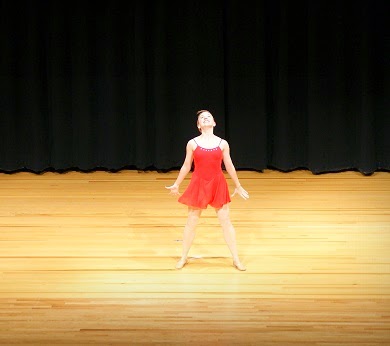I can’t pretend to remember a world without the internet. Even in kindergarten I went to “computer” class to play KidPics and make my own “world wide web page” complete with glowing hot pink comic sans font. In the days B.G. (Before Google), I used Yahoo! Search to find Harry Potter fan pages and the American Girl website. Still, with all my pre-pubescent millennial generation knowledge of https and hyperlinks, I remember very clearly when dance wasn’t online.
The “real” dance world, the world of professional dancers and elite ballet companies, seemed impossibly distant to me, an overly-ambitious nine year old practicing pliés and tendus at a small studio in South Texas. I checked out video tapes (remember those?) of Sleeping Beauty and Swan Lake from the library, and recorded every version of Nutcracker that aired on PBS in the month of December. Those perfect ballerinas in their glistening tiaras and pristine pointe shoes* were entirely otherworldly, human only in theory. Together the music and movement magically transformed those girls into Dancers. I longed to become one of them, but I wasn’t quite sure how. When in my long years of training would the transformation from dancer to Dancer be complete? At twelve, at fifteen, at the ancient-to-me age of eighteen? How many fatigued muscles, frustrating classes, and fractured ankles would it take for me to transcend my humanness?
Something shifted in my awareness of “real” Dancers when I received my first issue of Dance magazine. I read interviews with the dancers I watched on video tapes, the choreographers whose names I’d heard whispered reverently by my instructors or fellow dancers. News about dance companies, shows, and schools made me feel connected to this world. I realized that there was no such thing as a Dancer—they were all just dancers, regular people surrendered to an art form larger than themselves. Suddenly, the reality of dancers-as-people became immensely more thrilling than the abstract form of Dancer. I eagerly awaited the arrival of Dance every month and added subscriptions to Dance Spirit and Pointe when it arrived on the scene a couple of years later. I purchased and checked out piles of dancer biographies and read them in one sitting each.The humanness of dancers made the ethereality of their performances all the more alluring. Print publications connected me to that humanness, made me feel a part of it all.
These days, dance lovers no longer need to wait at the mailbox for the arrival of the latest pile of dance magazines. Dance blogs like The Winger regularly feature behind-the-scenes looks at dancer's lives while others feature company news and gossip. Choreographers upload reels and rehearsal footage to YouTube, and ballerinas have Twitter accounts. Much has been made lately of the new move by certain companies to draw back the curtain of mystery surrounding ballerinas. New York City Ballet recently began the practice of inviting the audience to ask questions of a company dancer before or after performances. Dancers blog and tweet and stay connected with fans and admirers in a more immediate way than ever before. In my opinion, this is a natural extension of the role than print journalism played in past decades. In an age when information can be shared more rapidly than ever, the escalation of audience’s desire for more information is organic. Reminding audiences and young dancers that their favorite ballerinas are human too can only be a good thing. I think a sense of familiarity towards dancers increases our interest in their careers, and (hopefully) will nudge us as a culture toward spending more time (and yeah, money) at live dance performances. I wonder, however, how print dance journalism is affected by the dance world’s leap onto the internet. Will hard copy dance magazines become obsolete in the next decade? For the sake of preserving the monthly Christmas feeling of finding a new Dance magazine in my mailbox, I hope not.
*Little did I know they were actually little satin pink torture chambers
